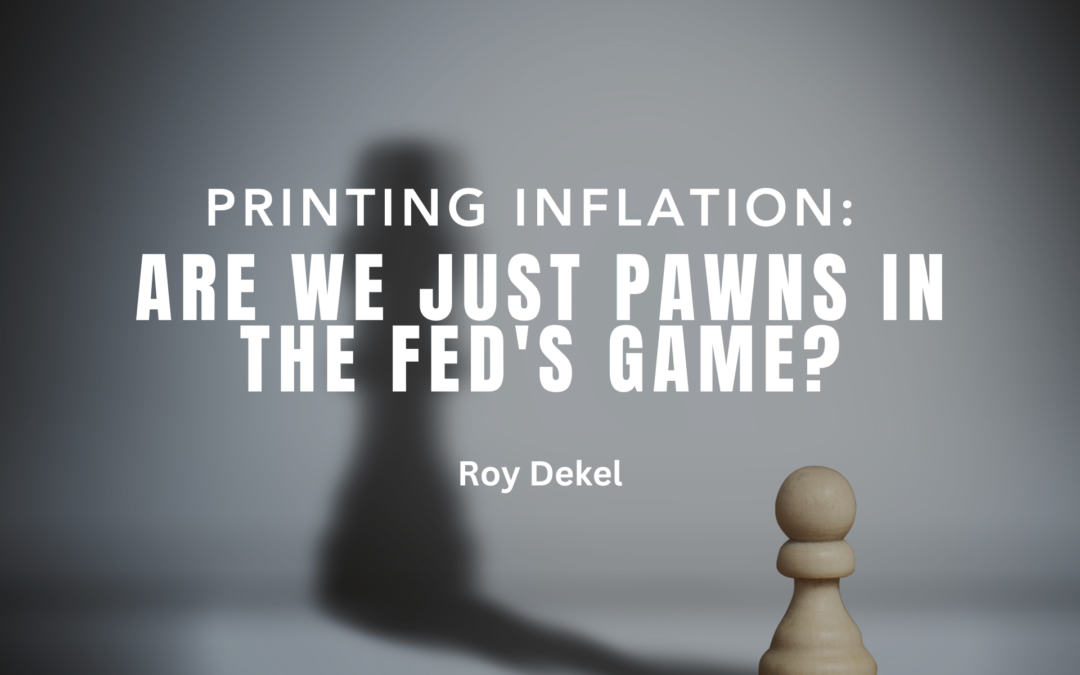Inflationary concerns loom large as the money supply continues to surge (ceteris paribus), leaving many puzzled by the Federal Reserve’s actions. With their cautious statements and uncertain forecasts, the Fed’s apparent indifference to inflation begs the question: why do they persist in walking on eggshells when they possess the authority to take decisive action? Are we just pawns in their game? Let’s quickly unravel the enigma surrounding the Fed’s behavior and delve into the audacious game they seem to be playing. While the complexity of the matter demands a fearless examination, it is crucial to shed light on potential reasons behind the Fed’s actions and challenge the prevailing narrative.
Confidence Amidst Uncertainty: The Fed’s Calculated Posturing
One perplexing aspect of the Fed’s approach is its unwavering expression of uncertainty. Despite deliberately raising their benchmark interest rates and issuing statements about what to expect, their rhetoric remains laced with doubt. To be fair, we shouldn’t overlook that the Fed’s public stance serves multiple purposes, including setting or manipulating market expectations and safeguarding their interests against unintended consequences.
A Tightrope Act: Navigating Inflation and Economic Growth
On the surface, the Fed’s core mandate is to maintain price stability and foster maximum employment. Excessive tightening, however, could choke economic activity, while an overly accommodating approach might ignite inflationary fires. This means striking the delicate balance between managing inflation and nurturing economic growth. It’s a high-stakes game. A game that requires the Fed to meticulously scrutinize a plethora of economic indicators, from employment data to GDP growth and inflation rates, for it to make calculated policy decisions.
Unveiling the Strategy: Unmasking the Fed’s Seemingly Deliberate Approach
Manipulating Data for Their Agenda
To gauge the health of the economy and shape monetary policy, the Fed heavily relies on economic data. Their cautious behavior, however, despite having access to critical economic data that we do not, raises suspicions. Does this stem from their need to control the narrative, often presenting cherry-picked or manipulated data to maintain an air of uncertainty and downplay inflationary concerns? But why? What is their true agenda?
Safeguarding the Status Quo
Financial markets can’t help but dance to the tune of the Fed’s policy decisions. Swift and assertive actions by the central bank can send shockwaves through the markets, disrupting the equilibrium and potentially undermining the Fed’s grip on power. By proceeding with caution, the Fed seeks to protect its entrenched interests and maintain its position as the puppet master of the financial system.
The Global Chessboard
The Fed must take into account international economic dynamics if they wish to survive in today’s interconnected world. Geopolitical tensions, trade wars, and global market upheavals introduce additional complexities. By playing it ‘safe’, the Fed is able to skillfully maneuver through these minefields, ensuring that its actions align with its global ambitions while minimizing any fallout on its carefully constructed narrative.
Challenging the Narrative
It is crucial to challenge the prevailing narrative surrounding the Fed’s actions. For industry leaders, it is natural to want to examine and analyze the intricate complexities of managing monetary policy and contending with inflationary pressures. An encompassing conclusion should also stem from exploring the Fed’s intentions, and recognizing how it can manipulate data to serve its own purpose. And as vigilant observers, we must refuse to accept the Fed’s narratives at face value. Why is this important? This allows us, business leaders to put more faith in our businesses rather than god knows what.

